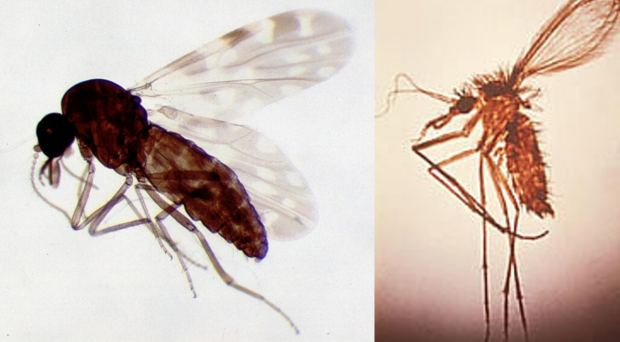
The neglected tropical disease leishmaniasis is on the rise globally, with an estimated 700,000 to 1 million new cases of the disease reported each year.
Thailand is no exception, where cases have been continuously increasing since leishmaniasis was first reported in 1999, particularly among HIV positive persons but also immunocompetent individuals. Today, leishmaniasis is generally considered an emerging disease with potentially high future prevalence in Thailand.
There are several Leishmania species responsible for human and animal infections in Thailand, including L. martiniquensis, L. orientalis and L. siamensis. As with all Leishmania species, they are traditionally considered to be transmitted by sand flies.

Increasing evidence from laboratory and naturally detected Leishmania infections, however, indicates that Culicoides biting midges could be important vectors of leishmaniasis in Thailand and elsewhere.
While Culicoides have been previously linked to Leishmania transmission, and several species (of the 168 species present in the region) have been found to be able to maintain the lifecycle of Leishmania parasites, there is still limited evidence of them feeding on humans and their feeding behaviour in leishmaniasis-endemic areas is unclear. As many of the midge species thought to be involved in parasite transmission feed on a wide range of animals, there is a possibility of zoonotic leishmaniasis, where these animals could serve as reservoirs of Leishmania parasites that are passed on to humans.
A recent study set out to better understand the blood-feeding habits and role of Culicoides in Leishmania transmission to humans in Thailand, focusing on a known endemic area of Northern Thailand’s Lampang province.

Over a 3-year period, 552 Culicoides midges were trapped, collected, and identified morphologically. Seasonal abundance of the identified Culicoides midges were investigated, their infection with Leishmania species determined using molecular methods, and the source of the midge’s blood-meal incriminated using nanopore-based amplicon sequencing.
At least 17 species of Culicoides midges were identified based on wing pigmentation, with Culicoides oxystoma (29.3%), C. (Trithecoides) spp. (15.5%), and C. shortti (11.9%) the most abundant species across all timepoints. The abundance of Culicoides species was also found to vary over the three timepoints of collection and between seasons, with notable species differences during summer and rainy seasons, suggesting environmental factors are influcing Culicoides lifecycles.

Thirty-one of the collected midges (11 species) tested positive for Leishmania DNA, giving an overall Leishmania prevalence of 5.7%, and indicating that Culicoides midges are likely common vectors for Leishmania in this region of Thailand. Within the midges positive for Leishmania, L. martiniquensis was detected far more commonly, with 24 midges positive for L. martiniquensis, whereas L. orientalis was only detected in 3 C. oxystoma midges.
Analysis of Leishmania barcoding genes from this study, as well as others in the GenBank database from across Leishmania-endemic regions in Thailand and seven other countries (167 in total), found 32 unique haplotypes of L. martiniquensis and 27 of L. orientalis circulating in Thailand and elsewhere. This highlights the considerable genetic diversity within the two Leishmania species, and provides evidence of population expansion and some global genetic intermixing in both species.

Sequencing of the blood-meals from 46 engorged Culicoides collected in the study showed that they had fed on at least 6 different vertebrate hosts, namely cows (Bos indicus), humans (Homo sapiens), chickens (Gallus gallus), deer species (Cervus sp.), pigs (Sus scrofa), and goat species (Rupicapra sp.).
Notably, humans and cows were the most common hosts, supporting the role of Culicoides in human leishmaniasis infections in the region. Approximately 40% of the collected midges had blood meals from multiple vertebrates, indicating a diverse feeding behaviour among the midges and reinforcing the possibility that zoonotic Leishmania transmission is a plausible concern in the region.

This research highlights the importance of understanding the ecological dynamics of leishmaniasis transmission and the complex interplay between Culicoides midges and Leishmania parasites. These insights are crucial for developing effective vector control strategies to combat the growing health threat of leishmaniasis in Thailand.

Comments